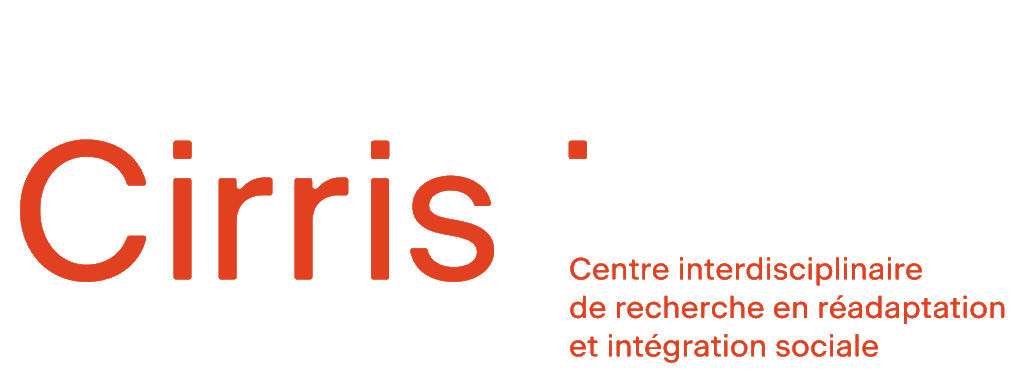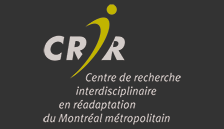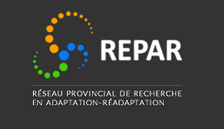Improving the accessibility of information and communication in the Montréal Museum of Fine Arts
Description
The project stems from the common concern of members of the Montréal Museum of Fine Arts (MMFA), researchers and clinicians to increase participation and inclusion of individuals with communication limitations in an environment such as the MMFA. Due to difficulties in communicating verbally and retaining information, and due to accompanying potential cognitive and physical limitations, persons with aphasia typically have difficulties understanding long and complex explanatory texts, posing questions, interacting with others, etc. Obstacles such as these may otherwise detract from this population’s experience, may exclude them from certain exhibits or facilities, and may cause anxiety and confusion, resulting in a growing number of community members choosing to not visit the MMFA or other cultural centres. Our team comprising researchers, museum personnel, a clinician and a student assistant will work together with up to15 people with aphasia and their caregivers to identify real-world obstacles as they experience a walk-through of the MMFA. The immediate results of the study are anticipated to provide specific recommendations, leading to precise and customized modifications and transformations at the MMFA.
Objectives
- To understand the experience and identifying the challenges experienced by the group of persons with communication difficulties and their caregivers as they participate in a walk-through of the MMFA.
- To study from a linguistic/psycholinguistic perspective the written materials accompanying the exhibits and other pamphlets and guides in order to identify areas that can be improved so that they can become more accessible to people with language and communication difficulties.
- Following an iterative process, to propose, verify, and adjust concrete modifications.
Milestones
- Preparation: Pre-walk through meetings. Decide on walk-through trajectories. Finalize questionnaires and walk-through procedure
- Walk-through the museum
- Data analysis: Qualitative analysis of notes taken during the briefing session and the walk-through, comments expressed by the participants and audio recordings. Presentation of report and of the written text modification process and basic principles
- Text modification phase: Text simplification and creation of visually accessible materials and guides
- Verification of solutions: Test solution-taking measures and modifications and implement adjustments
- Outcome and deliverables: Open house to showcase steps toward improving accessibility and inclusion. Dissemination of results and solutions. Write up results for media release, and submission to scientific conferences and journals.
Last update : January 20, 2021
Global progress
2- Preparation
2- Walk-through the museum
3- Data analysis
4- Text modification phase
5- Verification of solutions
6- Outcome and deliverables
Partners
Team members
- Eva Kehayia, principal investigator | Professor, McGill University, CRIR
- Gonia Jarema, principal investigator | Professor, Université de Montréal, CRIR
- Christie Brien, co-investigator | Post-doctoral fellow, McGill University
- Tiiu Poldma, co-investigator | Professor, Université de Montréal, CRIR
- Christine Alary-Gauvreau, collaborator | Speech Therapist and Ph.D. Student, Université de Montréal, CRIR
- Louise Giroux, principal partner | Responsable des programmes éducatifs – Mieux-Être, Éducation et Mieux-Être, MBAM
Intersectoral collaboration agent
Scientific sectors
Themes
Innovation stages
- Émergence, Expérimentation
All projects
- Accès à l’information et à sa compréhension pour une société inclusive
- Accompagnement par les pairs pour les personnes vivant avec la schizophrénie
- Co-development of intergenerational activities to break with ageism and support the social participation of people living with the after-effects of a traumatic brain injury.
- Action-research for the implementation of a hearing aid valorization program offered in the community and aimed at seniors with a hearing loss
- Improving the accessibility of information and communication in the Montréal Museum of Fine Arts
- Améliorer la connaissance de l’expérience utilisateur d’électroménagers pour des personnes vivant avec une déficience visuelle
- Améliorer la qualité de vie et la participation sociale des personnes en situation de handicap : identification des besoins à intégrer aux applications mobiles
- Offering learning opportunities adapted to autistic children: a lever for social participation
- Autisme et vieillissement : analyse des indicateurs de santé et de bien-être des personnes
- Avatar pour l’interprétation en langue parlée complétée (LPC)
- Para-athlete Technology Needs
- CARE PLAY: Community And REsearch PLAYing together using physical literacy knowledge translation tools targeting children with disabilities in Quebec
- Co-construction d’un cours de danse adaptée dans la communauté pour les enfants avec la paralysie cérébrale : Faire tomber les barrières
- Co-construction d’un programme de formation continue des acteurs municipaux en lien avec les plans d’action d’accessibilité universelle
- Co-construction of tools to foster inclusive environments for the social participation of adults with disabilities- in the context of gender and sexual diversity
- Co-design of an Assistive Internet Navigation Device for People with Visual Impairments
- Co-Creation of Leisure Experience in an Inclusive and Accessible Theatre Space: The Case of the Segal Centre for Performing Arts.
- Co-développement d’ateliers pour favoriser la connaissance de soi et la communication des adolescents avec un TDL
- Co-development of workshops to promote psychological well-being after a stroke
- Co-development of an active listening training for Autism Support volunteers
- Coconstruire des outils adaptés pour favoriser le pouvoir d’agir des personnes vulnérables atteintes de lombalgie.
- Co-constructing Neuroinclusion: Creating and piloting a tool to assess accessibility and inclusivity
- Codéveloppement d’une trousse d’outils pour soutenir l’émergence de tierces personnes inclusives en milieux de loisir.
- Comprendre et évaluer un camp intégrant intervention orthophonique et pairaidance en plein air pour les jeunes qui bégaient
- Understand and make others understand: Operationalizing an immersive design fiction tool to promote social participation by deaf people
- Connexion Spectrum : la sexualité et les saines relations
- Contraintes biomécaniques du basketball en fauteuil roulant
- De l’expérience à l’expertise : comprendre et construire les savoirs professionnels d’accompagnement pour renforcer l’engagement des superviseurs.es en entreprise adaptée
- Étude de cas en surdicécité visant à tester la faisabilité clinique, sociale et économique de nouvelles modalités de communication en face-à-face et à distance
- Exploring cognitive-social factors underlying pedestrian navigation following chronic moderate-to-severe traumatic brain injury (m/sTBI) using virtual environments
- Favoriser l’autodétermination lors de l’apprentissage de la conduite automobile chez les jeunes adultes ayant des incapacités
- Staff training and adapted physical activity
- Formation et familiarisation à l’utilisation du réseau régulier de transport en commun : un état de la situation des besoins et des ressources pour les personnes ayant des incapacités.
- Formation/entrainement pour faciliter l’utilisation des réseaux de bus et de métro accessibles par des personnes ayant des limitations fonctionnelles motrices
- Adapted physical activity for community organizations
- Identifying the Fundamental Movement Skills for Pediatric Manual Wheelchair Users: A Step Towards the Development of Inclusive Physical Education and Social Participation
- Impacts d’orthèses robotisées des membres supérieurs
- Inclusion sociale par l’activité physique en plein air chez les enfants atteints de trouble de développement de la coordination
- Artificial intelligence for people with Parkinson’s disease
- L’expérience des personnes handicapées dans le processus du CIPH avec leur médecin de famille
- The Mutual Aid Brigade: a vehicle for a stable, safe and healthy home.
- Le Café-IN : carrefour d’échange et de partages pour l’inclusion sociale des personnes ayant un traumatisme craniocérébral
- Les déterminants d’une expérience inclusive dans des ateliers créatifs : le cas du réseau des Bibliothèques de Montréal
- Logement social pour adultes autistes en quête d’autonomie
- Mobilizing the community, to design a support ecosystem adapted to women who are victims of domestic violence and have suffered a traumatic brain injury.
- Mon futur chez-moi en 3D – Map It
- Musées inclusifs : un état de la situation de l’accessibilité universelle dans les musées du Québec
- Participation sociale des personnes ayant des incapacités dans la dynamique de développement régional inclusif
- Fatherhood, co-parenting and disability: what are the experiences of fathers with disabilities in Quebec?
- For truly inclusive research: developing a training program co-developed with adults with intellectual disabilities
- Community matters: Promoting social participation for individuals living with early dementia and their partners.
- Pour une salle de classe inclusive
- Projet ceinture intelligente – Smartbelt
- Promoting Audiodiversity: The Right to (Fair) Self-Representation in the Media
- Recommendations for an inclusive digital budgeting assistance solution for individuals with traumatic brain injury.
- Réfléchir pour agir ensemble en formation et en sensibilisation
- Without taboos: Uniting for the inclusion of the sexual experiences and needs of adults with motor disabilities in sexology and rehabilitation
- Hiking trails: towards an accessible classification
- Soutenir ensemble la mobilité d’ainés présentant des incapacités: comment favoriser leur utilisation du transport en commun et leur participation sociale?
- Spina Bifida and aging: co-development of a toolbox
- Sport and rehabilitation
- Système électronique musical pour l’inclusion et la réadaptation
- Transition vers l’inclusion
- An Exploratory Study of Deaf and Hard of Hearing Women’s Access to Social Services
- Learning unit and inclusive work environment
- Utilisation des technologies de l’information et de la communication (TIC) d’usage courant par les personnes ayant une surdité
- Valoriser les pratiques quotidiennes des parents d’enfants ayant des particularités développementales : la créativité parentale comme moteur d’inclusion sociale
- Visitabilité des commerces
- Évaluation des exigences biomécaniques et physiologiques du ski paranordique




